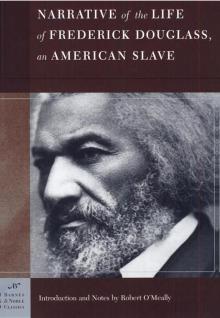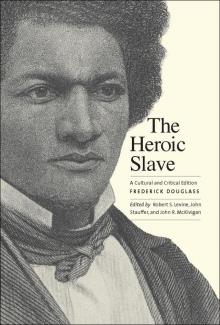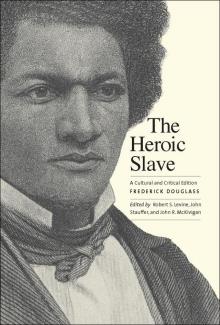- Home
- Frederick Douglass
Hog and Hominy: Soul Food From Africa to America Page 3
Hog and Hominy: Soul Food From Africa to America Read online
Page 3
Like the Igbo, the Congolese also cooked with palm oil, serving it with boiled rice and millet seasoned with a little meat, poultry, or fish. “The oil is so essential an article of food,” observed Hawkins, “the Africans employ it in all their meals, with yams, rice, millet, fish, and even with beef and mutton.”36 Mullet dipped in a “palm-oil and hot pepper marinade” and then dried and smoked over a hot fire was a staple among coastal dwellers. On special occasions, like the arrival of foreigners, the Congolese entertained at banquets offering rice, roasted and dressed venison, fowl, and milk.
An Igbo hostess also cooked stewed meat and duck but served it with foofoo instead of rice. Cooks usually served stews in a calabash platter containing a large loaf of warm yam foofoo. The diners then squatted around the communal calabash taking turns breaking off a lump of foofoo with their fingers and rolling it into a ball. This was then soaked in the hot palm oil containing floating bits of meat and vegetables. Igbo people also used foofoo-covered fingers like forks or spoons to eat other stewlike dishes.37
MANDE TRADITIONS
Mande speakers (identified in the primary sources used here as Mandingo and Mandinka) lived in the geographic area of the present-day countries of Burkina Faso, Senegal, Gambia, Guinea, Sierra Leone, Liberia, the Ivory Coast, and Ghana, among others. As largely subsistence farmers and rice eaters, the Mande people, according to the expeditions in the 1790s of the twenty-four-year-old Scottish explorer Mungo Park, performed their daily share of physical activity, thus staving off obesity. “Few people work harder, when [the] occasion requires, than the Mandingoes,” recalled Park.38 The vast majority of their time was spent cultivating rice, couscous, a variety of vegetables, including corn, and the shea tree (whose fruit is crushed and boiled to produce shea nut butter). “The labours of the field,” writes Park, “give them pretty full employment during the rains; and in the dry season, the people who live in the vicinity of the large rivers employ themselves chiefly in fishing. . . . Others of the natives employ themselves in hunting.” We know from Park that before they arrived in the Carolinas and other parts of the Southeast the Mande hunted squirrels, “Guinea-fowls, partridges, and pigeons,” foraged for insects, and raised milk-producing cattle. Park also recalls that a mainstay of the everyday Mande diet consisted of bowls of rice and couscous cooked with milk (or water) “flanked by copious bowls of cream and honey.”39 Again, the culinary transition that came with slavery in America was not drastic.40
By the nineteenth century, the Mande, like the Igbo, had fully introduced corn into their daily diets. A vivid description of how Mande women processed corn shows that it was a labor-intensive process requiring hard physical activity that kept them physically fit and lean: “In preparing their corn for food,” the Mande used a “large wooden mortar called a paloon, in which they bruise the seed until it parts with the outer covering, or husk, which is then separated from the clean corn by exposing it to the wind; nearly in the same manner as wheat is cleared from the chaff in England.”41 The woman then took the freed corn, put it in a mortar, and beat it into meal. This process was used to make a variety of corn-based dishes in different countries. For example, Mande along the Gambia River made a type of cornmeal-based pudding using milk and water; it was called nealing and may originally have been made with millet. Park tells us that, during lean times, the Mande also ate for breakfast “a pleasant gruel called fondi” made from foraged berries and millet or couscous. Both nealing and fondi seem like precursors of the rice puddings and custards made so popular by enslaved cooks on Carolina rice plantations.42
In the book Roots, Alex Haley traced his family history back to the 1750s Mande village of Juffure. During lean times, villagers in Juffure survived on edible leaves, insects, rodents, and roots. The Mande developed distinctive dishes through cooking alternative sources of protein such as beetles and grasshoppers. “These would have only been tasty tidbits at another time of year, but now, on the eve of the big rains, with the hungry season already beginning, the toasted insects had to serve as a noon meal, for only a few handfuls of couscous and rice remained in most families’ storehouses.” After the rains and harvest came, the Mande diet changed drastically. The people then feasted on meat three times a day until they completed the harvest. The ability to locate food during lean times in West Africa proved very profitable to enslaved Africans in the Americas, where planters distributed niggardly rations that kept most slaves famished, forcing them to hunt and steal food in order to survive.43
One-pot meals were the most common among both the Igbo and the Mande. For example, the British slave trader Theodore Canot tasted an unforgettable mutton stew called bonne-bouche in the Mande town of Kya. Canot recalled: “The savory steam of a rich stew with a creamy sauce saluted my nostrils, and, without asking leave, I plunged my spoon into a dish that stood before my entertainers, and seemed prepared exclusively for themselves. In a moment I was invited to partake of the bonne-bouche; and so delicious did I find it, that, even at this distance of time, my mouth waters when I remember the forced meat balls of mutton, minced with roasted ground nuts, that I devoured that night in the Mandingo town of Kya.”44
Mande women taught their daughters how to broil, roast, bake, and fry meats—a talent they would liberally exercise in slave quarters and big-house kitchens in the Americas. In Africa, Mande culinary arts called for jerking meat (salting and drying it in the sun) to conserve it. Among Mande living in the interior of the Gambia River region, salt was “the greatest of all luxuries,” because their mostly vegetable diet “creates so painful a longing for salt, that no words can sufficiently describe it,” says Park.45 Perhaps this is the origin of the African-American love affair with salty foods that has resulted in a disproportionately high diagnosis of hypertension in contemporary communities of African descent in the United States.
Coastal dwellers among the Mande would smoke, fry, salt, dry, boil, or pickle fish or serve catches raw, much like their descendants forced to migrate to the West Indies and the Carolinas. The fish they caught in West Africa, writes Park, “are prepared for sale in different ways. The most common is by pounding them entire as they come from the stream in a wooden mortar, and exposing them to dry in the sun. . . . It may be supposed that the smell is not very agreeable; but in the Moorish countries to the north of the Senegal [River], where fish is scarcely known, this preparation is esteemed as a luxury, and sold to considerable advantage.”46 Mande women would purchase the dried fish at market and then add pieces of it to boiling water, vegetables, seasoning, and couscous to make a fish gumbo. The knowledge and practice of Mande gumbo making continued in the Americas with regional differences, especially in port cities such as Charleston, Savannah, Mobile, and New Orleans.
Like the Igbo, Mande people skillfully used vegetable oils like shea butter and palm oil to deep-fry and flavor poultry. Mande descendants continued the cooking technique in the Americas, only in the colonial South lard replaced the healthier palm oil and shea butter. Fried or curried chicken and greens were yet another culinary tradition passed on to African Americans and West Indians by their Mande forebears. West African women batter dipped and fried chicken, grilled it, and cooked it in a curry sauce. They commonly served chicken with collard greens and dumplings. African Americans also learned from their Mande ancestors the practice of using chicken innards (hearts, lungs, kidneys, and gizzards) in their soups and stews as flavor enhancers.47 The African-American practice of eating chicken on special occasions is also a West Africanism that survived the slave trade. Among the Igbo, Hausa, and Mande, poultry was eaten on special occasions as part of religious ceremonies.48
SPECIAL OCCASIONS: FOOD AND AFRICAN RELIGION
Before Africans arrived in colonial America, they had a well-developed religious life that included “iconic foods served in ritualistic ways.”49 There are several keys to understanding the religious rituals that survived the African slave trade and would shape the African-American concept of soul: spirituality, love, p
atience, hard work, and pride. These were essential components of what would later become soul food. First, West African religions honored and acknowledged God and the community’s relationship to the spiritual world in everyday activities and on special occasions. Second, Africans held a belief that an honorable person showed reverence to God, community leaders, friends, and family through the use of music and food. As a result, West African ancestors incorporated music and food into their religious rituals and celebrations. Examples from different parts of West Africa and during different centuries illustrate this.
In general, we know that, on special occasions, hens were an important ingredient in many dishes. “The person who is to be made a Nobleman,” writes Dutchman Pieter de Marees, “makes everything ready, such as food and drink in order to regale his guests well and give them a proper treat. He buys Chickens and many pots of Palm Wine, and sends to each Nobleman’s home a Fowl together with a Pot of Palm Wine, so as to make them happy with him.”50 Africans sought to make their deceased ancestors happy with offerings of food as well.
The East Nigerian–born Olaudah Equiano (1745–1801) tells us that, in traditional Igbo religions and cultures, people had the practice of making “oblations of the blood of beasts or fowls” at the graves of dear friends and relations, whom they believed would “attend to them, and guard them from” evil.51 An English naval officer and explorer, William Allen, observed that just before the planting of yams, villagers along the Niger River contributed an abundance of palm wine and game to a yearly yam-planting festival, while the inhabitants of the city of Accra, in the kingdom of Ghana, commonly hunted and prepared hare.52
Considered the most important religious event of the year in the Niger River region, the planting festival involved a multitude of villagers, who devoted a portion of their food and drink to their god as libations before the start of a communitywide planting season feast. A similar celebration occurred at the completion of the planting season. The “Marocho, which occurs about our Christmas period of the year,” writes Allen, “is the greatest religious festival.” The weeklong feast featured goat and poultry dishes as well as a steady succession of “dancing, singing, and firing of muskets.”53 According to de Marees, Africans in Guinea served chickens as a funeral repast. Women did all the preparations. “For having a good time together at the funeral: they cook a Sheep, as well as Fowls and other food which they usually eat.”54 There is no record of what Africans ate after they learned about the capture and exportation of a loved one, but we do know what slavers forced their captives to eat before and during the Middle Passage.
FIGURE 1.2 “The Slave Deck of the Bark ‘Wildfire,’ Brought into Key West on April 30, 1860.” Harper’s Weekly, June 2, 1860, Library of Congress, Prints and Photographs Division, LC-USZ62-41678.
SLAVE PROVISIONS
As an eighteenth-century travel account explains, slave traders forced African captives to eat foods with both Old and New World ingredients onboard slave ships destined for the Americas. The enslaved Africans described in the following scene were native to the coast of Guinea: “The diet of the Negroes on board is a sort of pulp, composed of rice and horse-beans, with yams, boiled and thickened to a proper consistency, which is called a Dab-a-Dab, sometimes with meat in it, to this there is added a sauce, called flabber-sauce by the sailors, made of palm oil, mixed with flour and pepper; and there is an overseer with a cat of nine tails to force those to eat who are sullen and might refuse; an attempt to starve themselves being considered as the greatest possible crime, and receiving the severest punishment. This food is accounted more salutary, and nearer to their accustomed way of feeding than salt flesh.”55
West African eating customs played an important role in the formation of African-American eating habits in what would become the southern United States. The consumption of yams prepared in various ways is distinctly African. The Igbo used foofoo to eat stews with their hands in a manner similar to the way we use utensils. African Americans in South Carolina would later use corn bread in a parallel way to sop (or soak up) a mixture of molasses and the grease produced by frying salt pork and to eat collard greens. Another parallel is how African women used shea butter and palm oil to season and cook most of their vegetables, legumes, chicken, and fish. African Americans in the South would later use fatback and salt pork in the same way to prepare vegetables and beans. The continuation of African culinary practices among African Americans can also be seen in the use of large amounts of salt and pepper to season food. These are Africanisms that stand apart from the influence of the Portuguese on African cuisine, which began in the sixteenth century.
Before the Africans’ enslavement and forced migration to the Americas, the Portuguese introduced maize to the diet of Africans and increased the region’s population of hogs and hens for consumption. By the 1600s, Africans had developed the habit of eating corn in various ways, including in puddings, breads, and porridges reminiscent of grits. In some instances, corn complemented or replaced African grains like millet. Groups like the Igbo, however, continued to eat primarily rice. Their knowledge of rice cultivation motivated rice planters in lowland South Carolina to seek them out by name when purchasing slaves. Africans brought their way of cooking long grain rice with them to South Carolina; in the kitchen, it was the African cook and her culture that made the greatest thumbprint on South Carolina recipes, not the European culture of the mistress.56
Among West Africans like the Mande people, meat consumption was seasonal. During harvesttime, meat was eaten three times a day. After the harvest, women used meat sparingly as seasoning in stews and sauces rather than as the main course. This practice continued among Africans shipped to the Americas. During dry seasons and famines in West Africa, insects like the locust replaced the large and small game that vanished during long droughts. As for chicken, it was generally served to guests and used as part of religious observances; this is another example of an Africanism that continued in the South.
In the Americas, Africans would continue some traditions, like eating roasted yams, while altering or creating substitutes for other traditions. Amerindians and Europeans influenced the food that the earliest Africans used to complement and substitute for their eating traditions before arriving in the Americas. Captivity and chattel slavery exposed the Igbo and Mande to various new eating habits and food preparation methods, but they largely had access to most of the ingredients familiar to them in Africa. And before they were forcibly sent to the Americas, African women had already begun cooking with imported crops, many of them from the Americas, such as corn, cassava, and pumpkins.
ADDING TO MY BREAD AND GREENS
Enslaved Cookery in British Colonial America
For too long, Soul Food recipes were carried around in the heads of people grubbing for a living. They didn’t have much time for writing cookbooks. But a lot is known about what people ate as they built this country. And from that, we can tell a lot about where Soul Food comes from.
—JIM HARWOOD & ED CALLAHAN—
Soul Food Cook Book
When and in what ways did Africans develop new cooking and eating habits after arriving in the Americas? In Africa, they had developed ways of cooking and eating related to their distinctive cultures and tribes. After being sold into captivity during the Atlantic slave trade, they were suddenly forced to interact with all sorts of people in a variety of cultural and physical environments. Exposure to new and different people, as well as to new and different plants and animals for producing food, caused them to “shift emphasis from their old staples to the buckra’s [Igbo word for white people] new ones.”1
I limit my discussion here of this change to West Africans who were traded to the British colonies in the Carolinas and Chesapeake regions, with some discussion of the Caribbean. I chose this geographical focus the better to provide an in-depth analysis of the changes that occurred in African cookery over time. The total number of Africans imported into North America was approximately 481,000, or 5 p
ercent of the 10 million brought into the New World. The apex of the trade was between 1701 and 1810. Most of the slaves that entered the Southeast did so through the Chesapeake Bay and the port at Charleston.2 Scholarship done in the 1980s and 1990s on African identity in early America reveals that the first Africans came in loosely constituted ethnic groups that, in the process of adapting to slavery, created “distinctive regional common traditions.” “First-comers” determined the predominate traditions in each distinctive region of the New World.3
Africans from the Bight of Biafra (Igbos) were numerically dominant in the slave trade to the Chesapeake Bay region, which included the colonies of Virginia and Maryland. Igbo made up about 40 percent of the Africans in the Chesapeake Bay region, one-fifth of the remainder being Western Bantu, one-fifth Mande, one-tenth Akan, and one-twentieth each Mande and Malagasy (Madagascars). Planters in the Carolinas and West Indies preferred slaves from Gambia and the Gold Coast (Mande people from contemporary Ghana), who dominated the culture of the Carolinas and West Indies, followed by slaves from the Congo, Angola, and Mozambique-Madagascar (contemporary Mozambique, parts of Tanzania, and the Island of Madagascar).4
I read travel accounts and memoirs concerning the above regions to look at the ingredients and techniques Africans used to create their cuisine before and after captivity and forced migration to the Americas. Throughout this study, I place particular emphasis on learning how Africans and African Americans cooked, presented, celebrated, and socialized with food.
During the early stages of the Atlantic slave trade, eating traditions were exchanged as transatlantic links developed among European, African, Arab, and Asian traders.5 Many of the traditions that shaped African American eating habits originated in West African cultures. For example, the southern African-American tradition of eating dishes like grits and hot-water corn bread can be traced back to West Africans, who regularly ate porridges such as nealing, made first with millet and other indigenous grains and, after the 1600s, with corn that Portuguese slave traders introduced from the Americas. The African American tradition of eating corn bread with almost every meal can be traced back to West Africans, who began regularly consuming various types of corn bread after the 1600s. As mentioned, the African American preference for yams and sweet potatoes, pork, chicken, and fried foods also originated in certain West African culinary traditions. Rich seasoning, using herbs, heavy amounts of pepper and salt, meat, and cooking oil or lard, also has roots in West Africa, where both the Igbo and Mande liberally cooked with palm oil. In short, African preparation techniques and ingredients used in both everyday meals and on special occasions influenced African American eating traditions.

 Narrative of the Life of Frederick Douglass: An American Slave
Narrative of the Life of Frederick Douglass: An American Slave My Bondage and My Freedom
My Bondage and My Freedom Two Slave Rebellions at Sea
Two Slave Rebellions at Sea The Color Line in America
The Color Line in America The Negro Exodus from the Gulf States
The Negro Exodus from the Gulf States Hog and Hominy: Soul Food From Africa to America
Hog and Hominy: Soul Food From Africa to America Narrative of the Life of Frederick Douglass
Narrative of the Life of Frederick Douglass![An Appeal to Congress for Impartial Suffrage [a machine-readable transcription] Read online](http://i1.bookreadfree.com/i/03/23/an_appeal_to_congress_for_impartial_suffrage_a_machine-readable_transcription_preview.jpg) An Appeal to Congress for Impartial Suffrage [a machine-readable transcription]
An Appeal to Congress for Impartial Suffrage [a machine-readable transcription] The Color Line
The Color Line My Bondage and My Freedom (Penguin Classics)
My Bondage and My Freedom (Penguin Classics) The Heroic Slave
The Heroic Slave